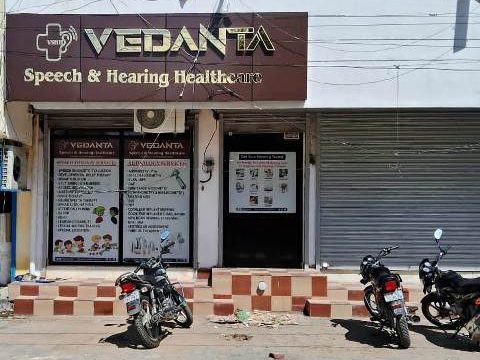Accurate tests to assess hearing and recommend care.
Helping children and adults speak clearly and confidently.
Digital hearing aids fitted for your lifestyle and hearing loss.
From evaluation to AVT, we’re with you at every step.
Advanced hearing implant solutions for better clarity.
Consult online from the comfort of your home.
Accurate tests to assess hearing and recommend care.
Helping children and adults speak clearly and confidently.
Digital hearing aids fitted for your lifestyle and hearing loss.
From evaluation to AVT, we’re with you at every step.
Advanced hearing implant solutions for better clarity.
Consult online from the comfort of your home.

Oral Placement Therapy (OPT) is a type of speech and feeding therapy that uses tactile (touch-based) cues and tools to improve the strength, coordination, and movement of the oral muscles involved in speech and feeding. It is often used with individuals who have difficulty producing speech sounds clearly or who struggle with feeding skills due to muscle weakness or poor coordination.
Oral Placement Therapy (OPT) is a speech therapy which utilizes a combination of:
Auditory stimulation (listening to speech sounds)
Visual stimulation (watching the therapist’s mouth)
Tactile stimulation to the mouth to improve speech clarity. (feeling how the mouth and face move)
OPT is an important addition to traditional speech treatment methods for clients with placement and movement deficits. It is a tactile-proprioceptive teaching technique which accompanies traditional therapy. Traditional therapy is primarily auditory and visual. Clients with motor and/or sensory impairments benefit from tactile and proprioceptive components because speech is a tactile-proprioceptive act. OPT is used to improve articulation awareness, placement (dissociation, grading, and direction of movement), stability, and muscle memory all of these are necessary for the development of speech clarity.
OPT can be used with clients of different age group and ability levels. It assists children who have issues with feeding, drooling and pronunciation. It can also be incorporated into program plans for many types of speech disorders (e.g., dysarthria, apraxia of speech voice disorders, fluency disorders and post CVA clients, as well as clients with mild-to-profound levels of hearing loss). Traditional auditory and visually based speech facilitation has not been effective with these clients because there may be a movement or placement disorder. So, before introducing any of the OPT techniques, the client’s motor functioning for speech and feeding should be thoroughly assessed. It is benifical for :
Children with speech sound disorders
Individuals with oral-motor delays
Children with apraxia of speech
People with Down syndrome, cerebral palsy, or autism
Individuals with feeding or drooling difficulties
Oral Placement Therapy (OPT) matters because it addresses the physical foundation required for clear speech and safe, effective feeding—especially in individuals who struggle with oral-motor control.
Supports Speech Sound Development
Improves Feeding and Swallowing
Builds Sensory Awareness
Bridges a Gap in Traditional Speech Therapy
OPT matters because it fills a critical gap for individuals whose speech and feeding challenges stem from motor-based and sensory issues, not just language delay. It helps them build the physical tools needed to speak, eat, and interact more effectively with the world.
Don’t Wonder If You Or Your Loved Ones Have Hearing Loss Or Speech Disorder; Find Out For Sure With Advanced Tests. Vedanta Speech And Hearing Healthcare Is Ready To Help You Or Your Loved One To Live Better. It All Starts With An Honest Conversation About Your Hearing Loss or Speech Disorder And a Test.

Vedanta Speech and Hearing Healthcare
# Number 6/1, MC Office Road, Punjabi Mohalla, Ambala Cantt # SCO 109, 1st Floor, Sector 40-C, Chandigarh Other Healthcare Centers also available at Ambala City, Chandigarh (Tricity), Jammu, Roorkee
91-7060360346 | +91-7347347718, Monday – Saturday | 10:00 am to 7:00 pm